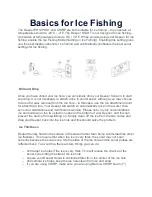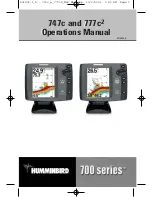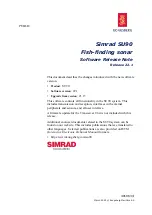
- 56 -
Installation
GPS Antenna
The GPS antenna used must be of the active type (i.e. it should incorporate an LNA) and must be
suitable for marine shipboard applications (index of protection, ruggedness, means of mounting, etc.).
An antenna should be selected with a gain (in dB) depending on the length of cable between the
antenna and the AIS unit; after subtraction of cable and connector losses, a minimum total gain of 25
dB should be available at the SAS SERIES unit GPS antenna connector.
The GPS antenna to be used for AIS use must be a dedicated antenna, i.e. not shared with any other
GPS receiver.
Installation of the GPS antenna is critical for the performance of the built in GPS receiver which is
used for timing of the transmitted time slots and for the supply of navigational information should the
main navigational GPS fail. We strongly recommend that:
The GPS antenna is mounted in an elevated position and free of shadow effec
t from the ship‟s
superstructure
The GPS antenna has a free view through 360 degrees with a vertical angle of 5 to 90 degrees above
the horizon.
As the received GPS signal is very sensitive to noise and interference generated by other onboard
transmitters, ensure that the GNSS antenna is placed as far away as possible from radar, Inmarsat
and Iridium transmitters and ensure the GPS antenna is free from direct view of the radar and the
Inmarsat beam.
It is also important that the MF/HF and other VHF transmitter antennas are kept as far away as
possible from the GNSS antenna. It is good practice never to install a GNSS antenna within a radius of
5 meters from these antennas.
VHF antenna
The VHF antenna employed for AIS use:
Must be a dedicated antenna, i.e. not shared with any other VHF transmitter/receiver.
Must be suitable for marine shipboard applications (index of protection, ruggedness, means of
mounting, etc.)
Should be omni-directional and vertically polarised with unity gain (0 dB) with a bandwidth sufficient to
maintain VSWR <1.5 over the frequency range 156
– 163 MHz. As a minimum the 3dB bandwidth
must cover the two AIS channels and the DSC Channel.
Should be mounted with at least a two metre vertical separation distance from any other VHF antenna
used for speech or DSC communication.
VHF Antenna Connection
Connecting a badly mismatched VHF antenna, leaving the VHF antenna port disconnected, or
Summary of Contents for HIS-75A
Page 18: ... 14 HIS 75A System SPEC of the connectors Metal Plastic ...
Page 23: ... 19 Display Chartplotter Data bar Scale Vessel icon AIS target ...
Page 26: ... 22 Display GPS Information Satellite List Gain of Satellite Receiver status ...
Page 42: ... 38 ...
Page 48: ... 44 ...
Page 68: ... 64 ...



































